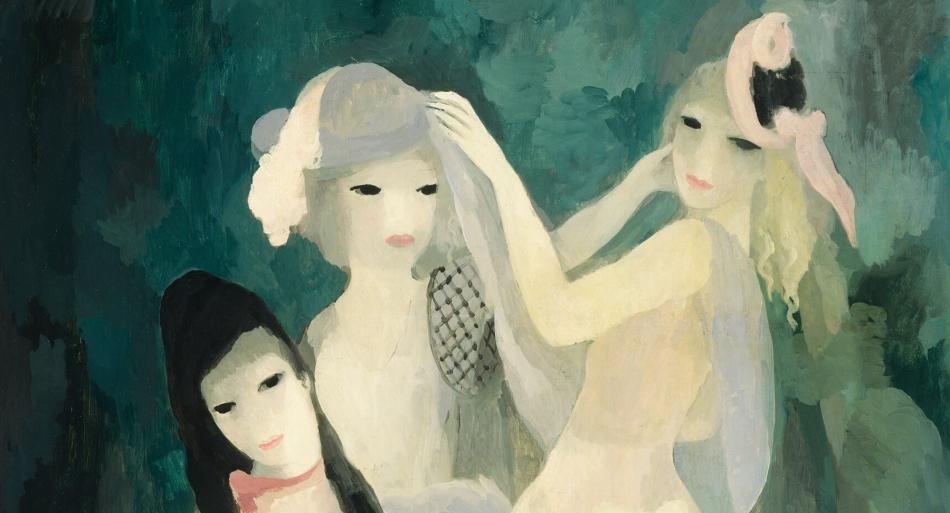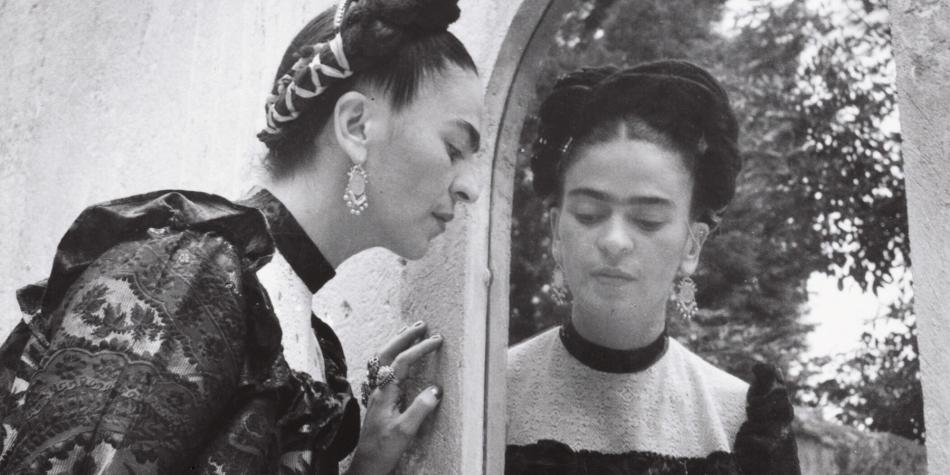The Aero
c. 1914
Marsden Hartley
Painter, American, 1877 - 1943

Completed in 1914, The Aero may have been the painting that Marsden Hartley described in a letter to his dealer, Alfred Stieglitz, the previous year: “I have one canvas ‘Extase d’Aéroplane’ if it must have a title—it is my notion of the possible ecstasy or soul state of an aéroplane if it could have one.” The artist was thrilled when he saw zeppelins, or huge airships, flying overhead. Both Europeans and Americans keenly followed advances in aviation, and Germany was swept by “zeppelin fever.” In the years leading up to the outbreak of World War I, potential rivals were concerned that Germany would build an air fleet capable of bombarding its enemies and transporting troops to distant places, even New York City. Yet Hartley did not address the potential danger; instead he presents an exuberant interpretation of one of the greatest inventions of the modern era.
Hartley lived in Berlin from May 1913 to December 1915, a period interrupted only by a four-month trip to New York from November 1913 to March 1914. Hartley’s imagery from this time has been widely acknowledged as constituting one of the most original new visual languages of modern art that emerged during the first two decades of the 20th century. Hartley combined the influences of fauvism, cubism, and German expressionism with his own mystical vision to create colorful abstract compositions that reflect his fascination with modern life in Berlin, especially the German military. The Aero is an energetic, colorful abstract painting that registers the influences of avant-garde art movements and alludes to one of the most revolutionary technological advances of the time.

East Building Upper Level, Gallery 415-A
Artwork overview
-
Medium
oil on canvas
-
Credit Line
-
Dimensions
overall: 100.3 x 81.2 cm (39 1/2 x 31 15/16 in.)
framed: 106.7 x 87.7 cm (42 x 34 1/2 in.) -
Accession Number
1970.31.1
More About this Artwork

Article: Your Tour of LGBTQ+ Artists at the National Gallery
See these 10 works by queer artists during your next visit.

Article: 15 LGBTQ+ Artists to Know
Discover the lives of 15 LGBTQ+ artists and their art, much of which you can see at the National Gallery.
Artwork history & notes
Provenance
The artist [1877-1943]; (sale, Anderson Galleries, New York, 17 May 1921, probably no. 46, as Pre-War Pageant); Hamilton Easter Field [1873-1922], Brooklyn, and Ogunquit, Maine; bequest to Robert Laurent [1890-1970], Brooklyn, and Ogunquit, Maine; his estate; purchased 15 October 1970 by NGA.
Associated Names
Exhibition History
1916
[Marsden Hartley exhibition], 291 Gallery, New York, 1916.
1951
Marsden Hartley, John Herron Art Museum (now the Indianapolis Museum of Art), 1951, no. 1, as The Aero, Pre-War.
1965
The Collection of Robert and Mimi Laurent and the Field Foundation Collection, Indiana University Art Museum, Bloomington; Colby College Art Museum, Waterville, Maine, 1965, no. 37.
1969
Marsden Hartley: A Retrospective Exhibition, Bernard Danenberg Galleries, Inc., New York, 1969, no. 6, repro.
1980
Marsden Hartley, Whitney Museum of American Art, New York; Art Institute of Chicago; Amon Carter Museum of Western Art, Fort Worth; University Art Museum, Berkeley, 1980-1981, no. 22, pl. 80.
1995
Dictated by Life: Marsden Hartley's German Paintings and Robert Indiana's Hartley Elegies, Frederick R. Weisman Art Museum, Minneapolis; Terra Museum of American Art, Chicago; Art Museum at Florida International University, 1995, no. 2, repro. (shown only in Minneapolis).
1996
Abstraction in the Twentieth Century: Total Risk, Freedom, Discipline, Solomon R. Guggenheim Museum, New York, 1996, no. 57, repro.
2001
Modern Art and America: Alfred Stieglitz and His New York Galleries, National Gallery of Art, Washington, D.C., 2001, no. 69, repro.
2003
Marsden Hartley: American Modernist, Wadsworth Atheneum Museum of Art, Hartford; The Phillips Collection, Washington, D.C.; The Nelson-Atkins Museum of Art, Kansas City, 2003-2004, no. 15, repro.
2014
Marsden Hartley: The German Paintings 1913-1915, Neue Nationalgalerie, Berlin; Los Angeles County Museum of Art, 2014, unnumbered catalogue, repro.
Bibliography
1979
Levin, Gail. “Hidden Symbolism in Marsden Hartley’s Military Pictures.” Arts Magazine 54 (October 1979): 158, fig. 8.
1980
American Paintings: An Illustrated Catalogue. National Gallery of Art, Washington, 1980: 170, repro.
Wilmerding, John. American Masterpieces from the National Gallery of Art. National Gallery of Art, Washington, D.C., 1980: 17, no. 57, color repro.
1981
Williams, William James. A Heritage of American Paintings from the National Gallery of Art. New York, 1981: 215, color repro. 217.
1984
Walker, John. National Gallery of Art, Washington. Rev. ed. New York, 1984: 574, no. 879, color repro.
1988
Wilmerding, John. American Masterpieces from the National Gallery of Art. Rev. ed. National Gallery of Art, Washington, D.C., 1988: 174, no. 64, color repro.
Scott, Gail R. Marsden Hartley. New York, 1988: 46-49, pl. 34.
1992
American Paintings: An Illustrated Catalogue. National Gallery of Art, Washington, 1992: 194, repro.
1997
Southgate, M. Therese. The Art of JAMA: One Hundred Covers and Essays from The Journal of the American Medical Association. St. Louis, 1997: 190-191, 215, color repro.
2000
Modern Art and America: Alfred Stieglitz and His New York Galleries. Exh. cat. National Gallery of Art, Washington, 2001: no. 69.
Kirsh, Andrea, and Rustin S. Levenson. Seeing Through Paintings: Physical Examination in Art Historical Studies. Materials and Meaning in the Fine Arts 1. New Haven, 2000: 250-251, color fig. 261.
2004
Hand, John Oliver. National Gallery of Art: Master Paintings from the Collection. Washington and New York, 2004: 410-411, no. 343, color repro.
2014
Scholz, Dieter, ed. Marsden Hartley: The German Paintings 1913-1915 Exh. cat. Neue Nationalgalerie, Berlin; Los Angeles County Museum of Art. Berlin, Los Angeles, and New York, 2014: 95 repro., 205.
2016
National Gallery of Art. Highlights from the National Gallery of Art, Washington. Washington, 2016: 278, repro.
2018
Driscoll, John. "Marsden Hartley: Pre-War Pageant." In Impressionist and Modern Art, Evening Auction. Sotheby's New York, 12 November 2018, "Property from the Collection of Ed and Deborah Shein," lot 28: 194, color repro. as comprative fig.
Wikidata ID
Q20191801



